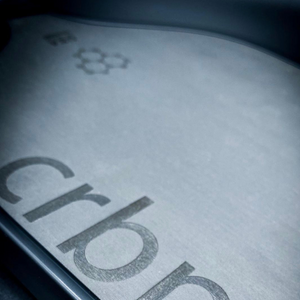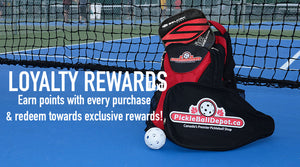How to choose the right paddle for you!

We recently read this really great article in the latest edition of Pickleball Magazine that we wanted to pass on; it contains a ton of great info and recommendations on choosing a paddle that fits your specific playing style.
Enjoy the read and don't forget to pop by our shop to pick up some no charge demo's to try the next time you're looking for something new!
*Article originally posted by Wayne Dollard for Pickleball Magazine- Oct/2019
How to choose the right paddle for you
There are more than 50 “Approved” manufacturers for pickleball, but the paddle manufacturers in this issue make up 99 percent of the tournament paddle market—and nine control 90 percent of all tournament paddle sales. They are Paddletek, Prolite, Head, Selkirk, Engage, Gamma, Franklin, Pickleball, Inc. and Escalade Sports (Onix). At the same time, there are more than a dozen other paddle producers that are rapidly growing due to quality and technological improvements. A few months ago, Pickleball Magazine conducted a survey of 1,000 USAPA Ambassadors. One of the questions we asked was, “Why did you choose the paddle you currently use?” And the overwhelming response was “for playability.” Here are some things to consider when choosing a paddle.
CORES While some paddle cores are solid, the overwhelming majority is made with some sort of honeycomb-style material; but not all honeycomb-shaped polymer cores are equal. Have you ever wondered how a manufacturer could produce two paddles of identical size, yet one weighs half an ounce more? The answer is the thickness and size of each hexagonal honeycomb. By placing the holes closer together, or by using a thicker honeycomb, the paddle will become heavier, and the sweet spot will generally expand. While polymer is generally a heavier material, contributing to its reputation for power (pop), it has less “natural” pop than aluminum or nomex/aramid cores of the same weight. These cores are combined with a number of different facing materials, primarily polypropylene, but also fiberglass (more pop/power) and more recently graphite (more control/ touch). Like other core materials, polymer performance will be mostly dictated by weight and face material/surface treatment. Aramid/nomex core paddles have a nice combination of power, control and feel. Nomex is DuPont’s trademark and is an aramid fiber paper coated with phenolic resin (think paper honeycomb coated in liquid fiberglass). This was the first honeycomb material used to build pickleball paddles. Depending on surface face material, these paddles can often be combined with graphite, creating good control paddles, or fiberglass face materials, creating great pop. They feel nice when you hit the ball; however, by the nature of the material, they can eventually break down and develop dead spots.
SURFACE MATERIAL (SKIN OR FACE) The surface of the paddle is most commonly made of a fiberglass (reinforced plastic polymer) or graphite, although there are many great paddles using carbon, kevlar, or some other combinations. Each will intentionally offer a different feel to complement the characteristics dictated by the core material and weight. Fiberglass surfaces are highly durable and tend to offer good pop/power. Graphite surfaces are known for their lightweight and responsive touch. They can be combined with almost any core material to create paddles with good control/soft touch. Graphite surface paddles are generally a little more expensive and difficult to source. Polypropylene is a common facing material used with polypropylene cores. It is highly durable and heavier in weight. Aluminum and carbon fiber surface paddles are less common and therefore less tested. Paddle surfaces are often finished with paint, screen print or vinyl, which can add a small amount of texture (for spin), weight (for power) or hardness (for power). The USAPA has applied very stringent limits to the amount of texture that can be on a paddle surface. To sum it up—if the surface face offers a spin advantage, it will probably not pass USAPA testing.
PADDLE WEIGHT One of the most important and easy to-understand things that affect the play of a paddle is the weight. Some argue that their reflexes are slower with an 8-oz. paddle versus a 7-oz. comparable model; however, if you’re basing your dinking game decisions on reflex play, you’ve probably got this all wrong. Manufacturers and virtually all touring pros agree that the added weight allows for less effort to hit stronger, more accurate shots. They would also agree that heavier paddles have larger sweet spots and are better for blocking, driving and serving. Unless you have a debilitating arm injury, side with a heavier paddle.
FINDING YOUR PADDLE So which paddle is best for you? The paddle you play the best with—and feel most confident with!
If you’re not sure what to look for, first determine what type of player you are. Be honest. It’s not who you want to be—it’s who you really are. Type-A individuals may lean toward more of an aggressive type of playing paddle having some weight and pop, while a “B” personality may want a lighter, softer paddle for better touch. Your personality does matter.
Since weight is so important, check the weights of every paddle you demo. You’ll probably see a trend. Lighter paddles offer better control over your dinking and soft game, but will make it tougher to drive the ball hard when needed. Heavier paddles offer more power because of the extra mass behind the ball, but this may cause you to lose control over your soft game. Experiment and find what gives you a well-balanced game.
Make sure your paddle has enough power for you to easily get your serves and returns deep in the court without having to swing too hard. If your balls are landing short too often, try a more powerful paddle. If you are popping up your dinks a lot, try a model made more for control. This power versus control equation is key, but also the one element that’s different for everyone, so find what works best for you and your game. Next, make sure to demo at least one graphite and one polymer paddle. You’ll feel a significant difference when dinking and from the baseline. Graphite tends to offer more touch and feel, while composite gives a little more pop.
Next, it’s time to think about paddle shape. Most paddles have a similar conventional shape that’s usually about 8" wide and 15.75" long. If you play a lot of singles, you want to consider a longer, narrower shape that will help you cover more of the court and reach more volleys at the net. These longer paddles provide more power, with a sweet spot more toward the tip that former tennis players will love; however, a narrow paddle means a narrow sweet spot, which can make doubles play more challenging. Also, when it’s windy, it may be tricky for you to find the center of the paddle.
Finally, you must consider handle size and length. This is often overlooked when purchasing a paddle, but it’s probably one of the most important pieces of the puzzle. The handle is your only connection to the paddle and control over the paddle face, so having the right grip is critical to controlling your shots. Hold the paddle like you are shaking hands with it. With your normal relaxed grip, you should have a little space between your fingertips and your thumb pad (about ¼" to ½"). If your fingertips almost touch or touch your thumb pad, your grip is too small. If there is a space larger than ½", then it’s probably too big.
Too-large or small grip circumference can cause discomfort in the form of “tennis elbow” and hinder your play. The length of the grip can also make a difference. If you place your index finger on the back of the paddle or like to slide your hand up the grip for more control, then try a paddle with a shorter grip length. If you like to hit a two-handed backhand or if you have overly large hands, a longer grip will work better for you.
In summary, every paddle plays differently and it’s your job to find out which one works best for you. The technology has arrived and there are many great paddle manufacturers out there. Go to a demo day at a major tournament or ask your local pro to arrange one. Your game will improve and you’ll enjoy pickleball at a higher level.
- Cara Arding







Comments 0